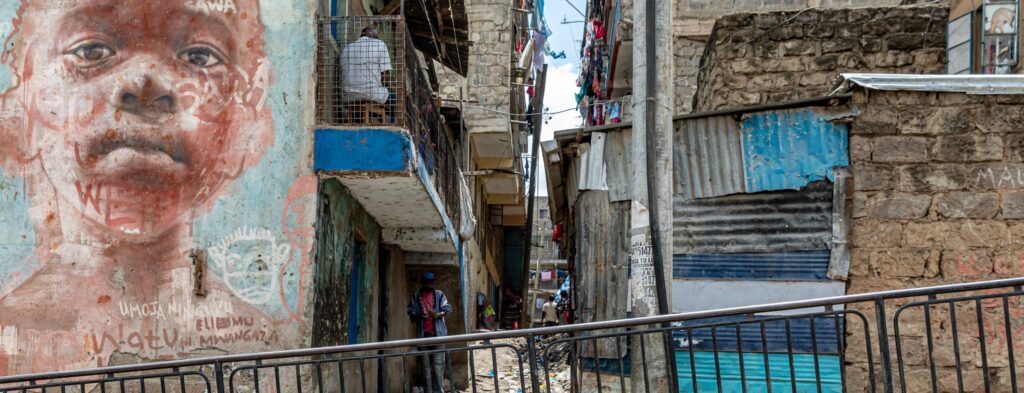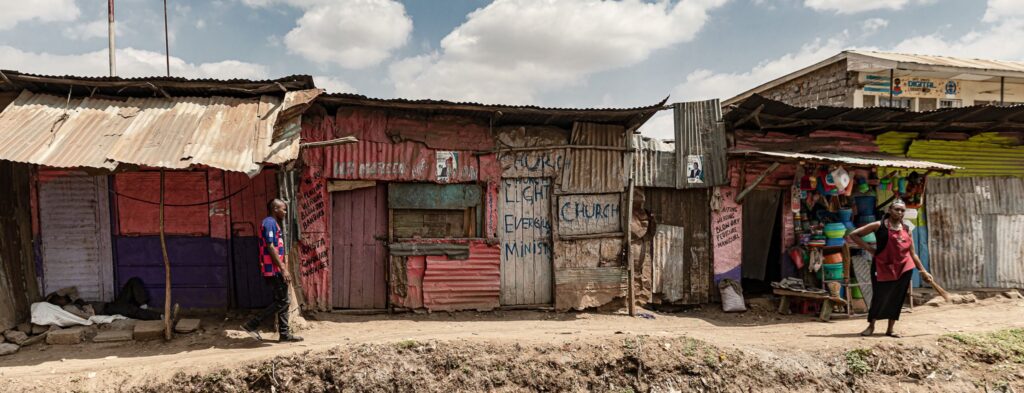Pursuing Whole-Person Missions Without the Church
Often, something that brings us to our knees puts us on a new path. Many medical doctors are strong-willed and that is my trait. It takes a confounding experience to change a strong will.
I entered missions about 30 years ago with zeal for changing the plight of the poor and vulnerable. Then after three years of hard work, Christmas Eve 1999 brought me to my knees. I discovered that what might feel like failure can lead to greater success.
By then I was doing both spiritual and physical care. I ran a community-based medical ministry for the leprosy-affected, targeting a population of about 5,000. It included a ministry for vulnerable children with a pre-Christmas Vacation Bible School (VBS) for 400 children to be held in our backyard. Plus, I was caring for my husband and two toddlers. I was busy, to say the least. But the urgent matter was the VBS which had attracted a larger number than expected.
I woke up very early to visit multiple bakeries to acquire enough bread for VBS. As I drove home on this misty, cold morning, what I came upon completely shocked me. Children aged 5, 7, and 10, shivering in the cold at 6.00, picking through a trash pit—living fully on the streets, only a block from our mission house.
My heart was broken. I fought back the urge to bring them home with me. I considered giving them the bread I had just bought. I thought perhaps I should begin an orphanage on top of the other things my family and I were doing. How do you witness that and walk away? How could I continue only giving prescriptions for health needs when this gaping social, emotional, and mental need was unmet in the community? How does a person or a community experience holistic care?

What Prompted Me to Involve the Church and How?
I battled with ideas for several days until my entire ministry paradigm changed. I resolved that it was not going to be me in charge of giving bread, running an orphanage or even continuing community-based medical care for lepers, nor running the VBS that had gotten out of hand. It all had to stop.
It would no longer be me. Instead, I would equip the church to take responsibility for whole-person and community care. This new strategy would be called holistic ministry. The church would bring a response to these needs by:
- Lifting up the church to fulfill her mandate and become relevant.
- Helping the vulnerable to become empowered in their own communities, bestowing dignity on the least of these.
- Dealing with systems and root causes to provide solutions for the affected while preventing others from experiencing the same consequences.
Implementation of this strategy requires partnership with local churches, equipping them to lead and own the transformation process in these communities completely after three years. It means going in with a planned exit strategy. This is the approach we implement at Life In Abundance International.[1]

The Approach and Biblical Basis of Involving the Church
The model is anchored on Isaiah 61 which describes Jesus’ mission. Jesus came to preach the good news to the poor. Isaiah 61 explains the process to full redemption stating what restoration entails until righteousness comes forth. This mission of Jesus is the ministry to the whole person that we follow as his disciples.
God does not call people to become heroes and gain glory. He calls us to exalt him.
We go into a community and start with prayer walks in and around it, to understand and welcome the kingdom agenda. Then we bring together leaders from strategically placed churches in a vision-casting seminar, describing what holistic ministry by the church could look like. Those who buy in are invited to a Training of Trainers. Next, we jointly carry out a basic, participatory, baseline survey of the community. Community mobilization and organizing follow. We begin implementation, with baby steps, aimed at addressing the identified priority felt need with an achievable solution. The church is equipped during the three-year time frame to implement additional interventions in the areas of Community Health, Education, Economic Empowerment, and Social Engagement.
The focus is on holistic approaches (that have long-term impact and are sustainable) to felt needs. This is part of the way God has called the church to fulfill his kingdom plan, led by the Spirit. People are involved to identify sustainable solutions for their felt needs and own their change.
The Life in Abundance (LIA) International facilitator walks alongside the churches in a mentorship relationship for three years—training, encouraging, and equipping them to ensure that they are ready to serve. Local churches are strategically located within poor communities. They are the change agents. They are salt and light. Using this systematic approach and keeping the church in the center, the mission of Jesus as described in Isaiah 61 is implemented.
The researchers noted that when communities are living out their transformation, they do not talk about Life in Abundance and the impact we had on their lives. Instead, they reference the church, to whom they truly should look.

The Impact from Involving the Church
We wonder what impact, if any, still exists in the communities we left 25 years ago, 10 years ago, or even as recently as three years ago. Had we made a significant difference? Is there sustained impact worth reporting through the hundreds of churches we have partnered with in these communities where work concluded? Has it been worth the past and ongoing investment?
Only individuals who have been spiritually and internally changed can sustain behavioral and physical changes to become the righteousness of God, even in the face of spiritual warfare.
To put that speculation to rest, in 2015 we boldly invited an independent group to undertake an impact assessment. Their task was to randomly choose six communities from all the communities we had worked with and collect quantifiable data to evaluate the short-term and long-term models. With this data, they responded to the hypothesis that when the model is implemented in a community, the resulting holistic change can be sustained and expanded by the same community after the facilitator leaves.
The evaluators chose the six communities and evaluated sustainability across six key areas of whole-person care:
- economic empowerment
- community health
- education
- environmental impact
- social engagement
- spiritual transformation.
The team also evaluated the levels of sustainable impact looking at direct beneficiaries spread within the community and the impact beyond the initial community.[2]
The data analysis showed that there was sustained impact on direct recipients. Our target beneficiaries were sustainably transformed after three years of participatory program services. And there was sustained impact in the community where the direct recipients lived. They had affected their neighboring population after we exited. This was the case in all the communities that were evaluated.
Additionally, in three of these evaluated sites, local churches had exported the program, replicating the same projects in new communities, thus expanding impact. This totally contravenes conventional development and humanitarian work, in which impact tends to dissipate after the developer leaves. To the surprise of the researchers at several of the sites, they noticed that the ripple effect of impact within the community actually increased over time rather than dissipating. I was personally amazed, but not surprised at the findings.
The study report concluded with three points:
- This work continues to flourish even after the facilitator is no longer present.
- In all sites visited, there was no question that people are engaged in effective and transformative ways to bring holistic change to their communities.
- To achieve this lasting change, a holistic model of care through the local church is essential. The components of the model all work together, and none can be isolated to achieve success. The interdependencies were evident across all sites on deep and complex levels.
I am thankful for what God has done through us and the church. That soul searching event in 1999 led to the local church, then the first Training of Trainers, followed by a three-year pilot, and fast forward to our ongoing work in 12 countries in Africa and two countries in the Caribbean.
Over the years, close to two million people have been holistically cared for. Of those directly served, over 50,000 new believers have come to know Christ as Lord and Savior. More than 3,500 churches have been equipped and we continue to equip more in these 14 countries and globally. Local churches are implementing holistic care ministries in their communities.

Current Trends
God demands we respond, and he cares just as much about how we help.
If the 1999 Christmas Eve incident had not confounded me, I would probably still be busy in that first community, being a hero and doing things for people, on people, to people. I would be burnt out, feeling needed, creating dependency, doing what I would call ‘good works’ but demeaning the bride of Christ and in the process actually doing self-serving harm.
God does not call people to become heroes and gain glory. He calls us to exalt him. We have learnt to give God glory through equipping the local church, so we can leave sustained impact in the places we have been. This strategy works, and it carries the cardinal features of what God is blessing globally, because it is his mission, his way.
The local church cannot be bypassed for she has the mandate to speak the word of God by implication, demonstration, and proclamation. The church is the acceptable and lasting spiritual voice in the community. As the community accepts a church-based program, they accept the function of the church, and expect its expression within the program activities.
The integral mission of the church has now become commonly accepted, and it is the current trend in effective missions. The proclaimed Word has power to bring the transformational change described in Isaiah 61.
Only individuals who have been spiritually and internally changed can sustain behavioral and physical changes to become the righteousness of God, even in the face of spiritual warfare. This is the redemption ministry Jesus came to accomplish and he blesses it and builds it on his church.
Endnotes
- ‘Defeat Poverty. Restore Dignity’, Life in Abundance International, accessed 28 August 2023, https://lifeinabundance.org.
- This comprehensive study produced a thorough 53-page report available from www.lifeinabundance.org.

